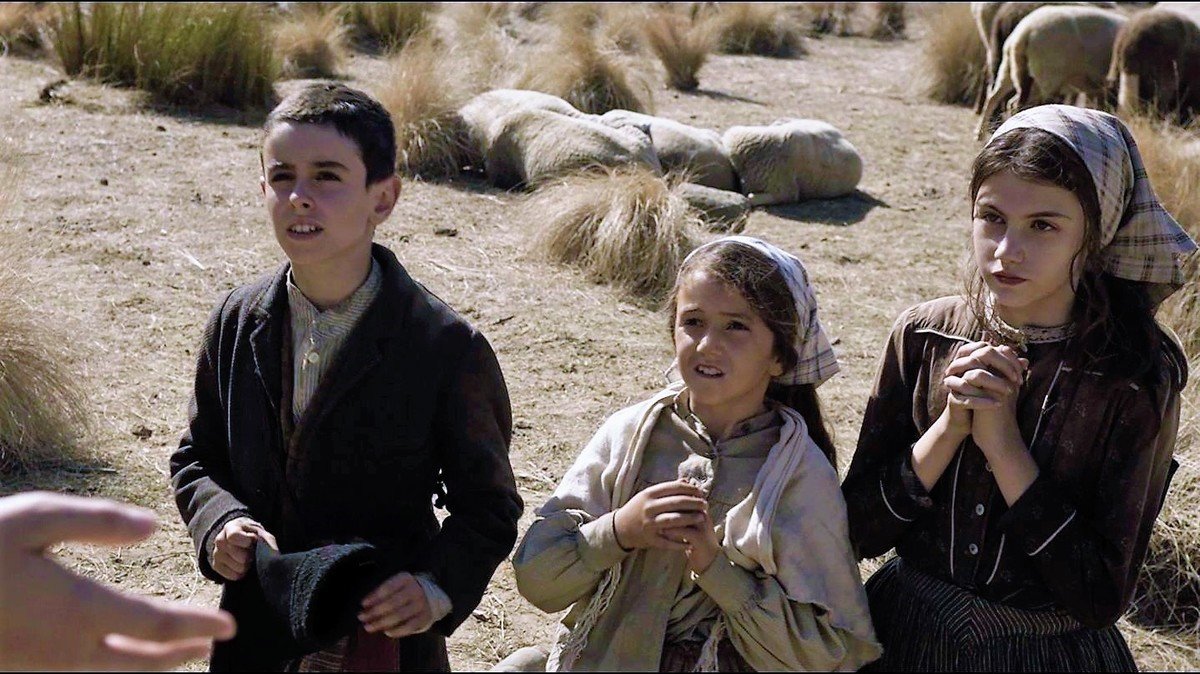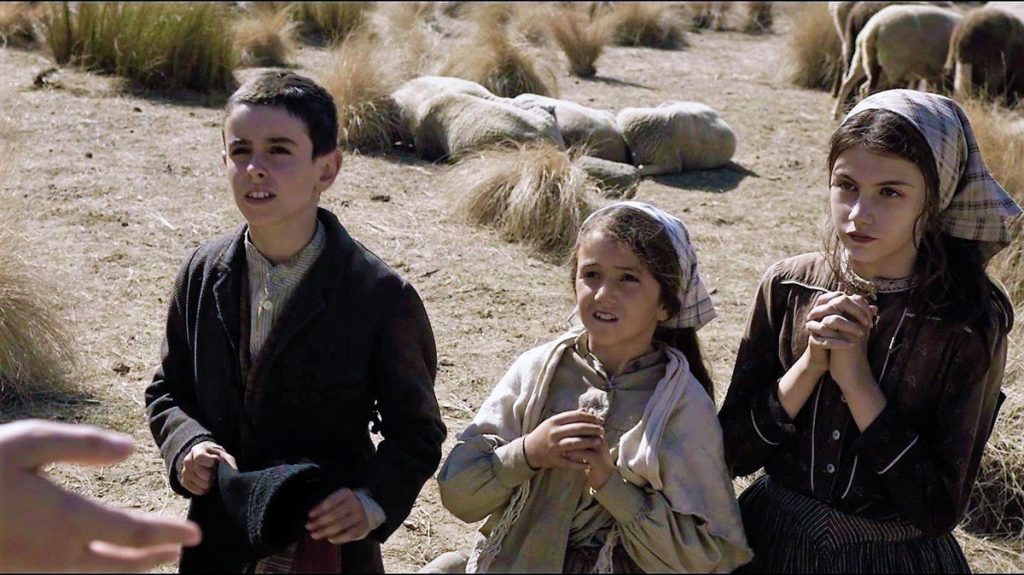

With its pleasant visuals, solid performances, and faith-friendly perspective, Fatima offers a gently embellished retelling of the early 20th-century apparitions of Our Lady to a trio of Portuguese children.
It is a straightforward story about a piece of history and the triumph of a simple faith, which in its essence goes like this: the children experience a miracle, many people doubt them, and then some people, after several additional miracles, believe.
While some will find such a story arc just reaffirming enough to be satisfying, most I daresay will walk away rather underwhelmed.
Of the many imaginable ways to tell this episode in the lives of the child saints – Jacinta and Francisco were canonized by Pope Francis in 2017 while Lucia’s cause is continuing – Fatima emphasizes its broader context during the First World War.
The story’s central conflict is the mounting social pressures faced by the children to recant their extraordinary experiences out of preference for more established forms of personal piety and behaviour that will prove less ruffling to an already war-harried state.
The struggle is one of faith versus doubt, child-like acceptance of the miraculous versus the false sophistication of secular worldliness. So far so good.
But the contrast between these genuinely opposing values is so black and white that it might easily encourage a false impression about faith and miracles. One of the tendencies I have observed among some of my students who are quick to draw attention to the more extraordinary alleged miracles of the Catholic world – incorrupt saints, bleeding Eucharist hosts, apparitions of Our Lady, et al. – is an understandable yet ultimately imbalanced desire for certainty.
Look, they seem to say, this miracle proves that Catholics are right (and, as it happens, everyone else is wrong). Miracles are just as inarguably and demonstrably true as scientific fact, so long as you have the faith to believe in them.
A similar perspective seems to underlie this film.
The child seers who experience the visions of Our Lady are depicted from square one as unerring in every respect. Their only challenge is to stand up for what they have seen against the onslaught of the skeptical, to pray more, and to wait for either the conversion of sinners, miraculous vindication from on high, or, in their case, a combination of both.
Sanctity here seems more or less identical to certainty. These saints only suffer, it would seem, because of their own neglect of daily pieties and the ignorance, stubbornness, and spitefulness of other people.
Is this an accurate representation of the experience of Christian faith? For some, perhaps, such as those specially graced with an impenetrable belief or a noble simplicity of intellect. But for most, I imagine, Christian faith in this fallen world will always be tinted with some degree of doubt.
This certainly has been my experience. It is also how Joseph Ratzinger (latterly Pope Emeritus Benedict XVI) describes faith in his challenging yet rewarding Introduction to Christianity.
It fits, too, I think, with the common representation of miracles in Sacred Scripture. In the Biblical witness, miracles are seldom, if ever, the precursors to belief; rather, they presuppose and reaffirm it (see Matthew 13:58, Acts 14:9, Luke 16:31).
Indeed, it appears to be one of the peculiarly persistent principles of Our Lord that in his ministry to a fallen humanity he simply will not compel anyone. He does not do marvellous deeds as public demonstrations to overcome doubt and knock critics on their heels. He does them to quietly aid and foster the faith of the believers they touch.
This is what the Church means in labelling the extraordinary events such as those at Fatima “private revelation.” They are not binding on the faithful – i.e. no Christian is requiredto believe in them in the way belief in the Resurrection is necessary.
On the other hand, the Church reasons, if an icon that oozes oil or an appearance of Our Lady sometime last century encourages an individual to live a more joyful, obedient, and charitable life of faith, then thanks be to God.
All this analysis takes us a little ways from what is overtly depicted in Fatima. But it does address an attitude which the film might foster amongst some who are drawn to it (and the events it depicts): an inclination, perhaps without realizing it, to brandish the extraordinarily miraculous as if it were the substance rather than the servant of that ordinary miracle, a life of loving faith.
